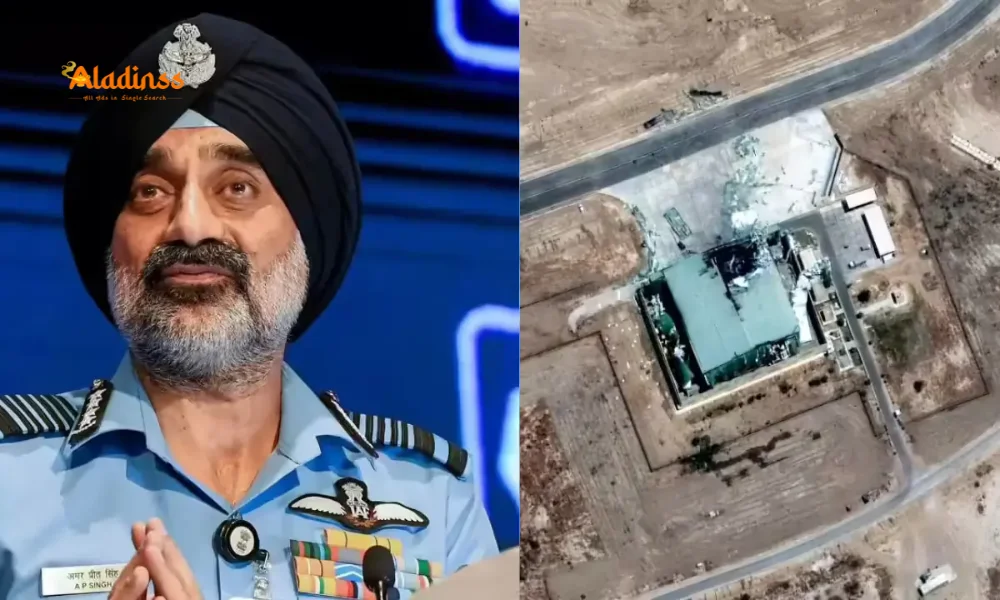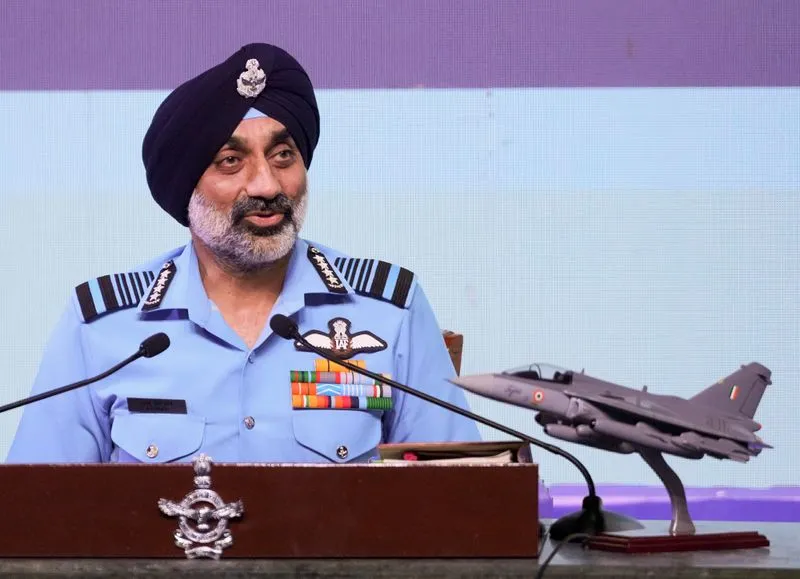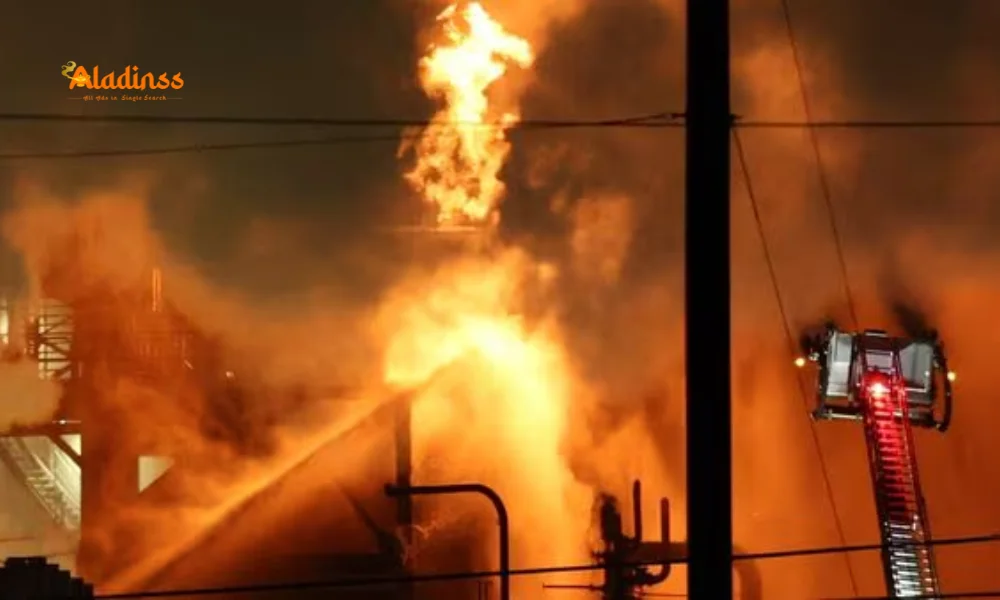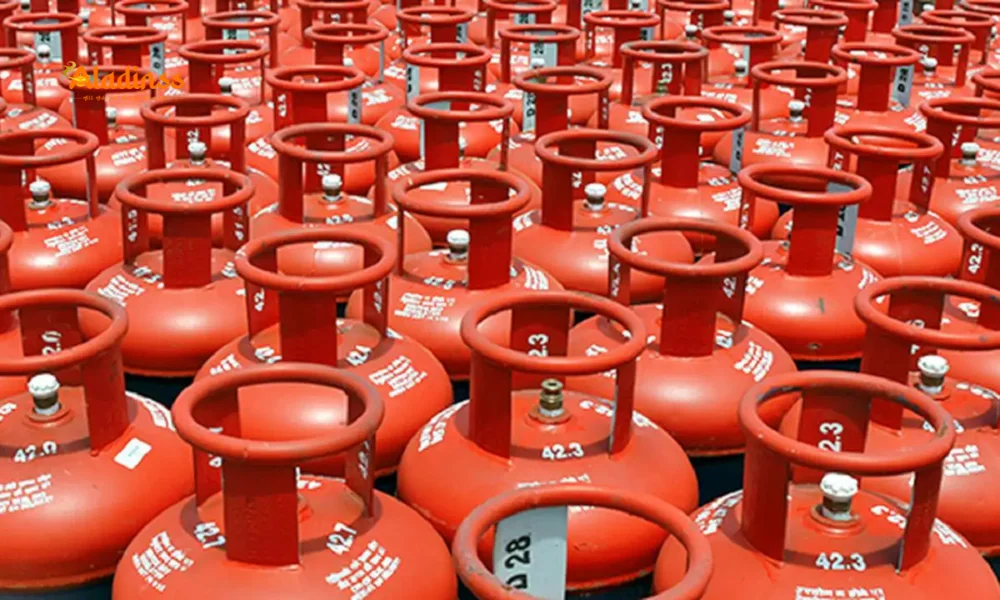Operation Sindoor: US Repairs Pak F-16s Post-Strikes

Operation Sindoor's Hidden Toll: US Aids Pakistan in Repairing F-16s, AWACS After Indian Strikes
India's daring Operation Sindoor in May 2025 delivered a devastating blow to Pakistan's aerial defenses, obliterating F-16 fighters, a Swedish Erieye AWACS system, radar installations, and operational hubs, according to exclusive documents and senior sources obtained by CNN-News18. Launched on May 9-10 in retaliation for the brutal Pahalgam terror assault in Kashmir, the precision airstrikes targeted militant hideouts across Pakistan and Pakistan-occupied Kashmir (PoK), but inflicted far-reaching harm on military infrastructure-contradicting Islamabad's blanket denials of any asset losses. As Pakistan raced to restore capabilities, the United States intervened decisively, dispatching repair crews and blocking Chinese involvement to safeguard sensitive tech, highlighting the intricate web of alliances in South Asia's volatile security landscape.

The operation's ferocity at key Pakistan Air Force (PAF) installations exposed vulnerabilities in Pakistan's defenses, forcing an emergency infusion of $400-470 million in classified funds by late May for urgent fixes and enhancements. From the rubble at Bholari to the craters at Shahbaz, the strikes not only neutralized terror threats but reshaped regional power dynamics, with US logistical flights and expert teams underscoring Washington's pivotal role in stabilizing a fragile neighbor amid escalating India-Pakistan tensions.
Bholari Airbase Catastrophe: F-16 and AWACS Losses Rock PAF
Among the most crippling blows landed during Operation Sindoor was at PAF Bholari Airbase in Sindh, where an Indian missile demolished an F-16 fighter sheltered in its hangar, claiming the lives of five PAF airmen-including a Squadron Leader and a Chief Technician. The base, a vital hub for fighter operations, also suffered a direct hit on its prized Saab 2000 Erieye AWACS, the Swedish-origin airborne early warning system critical for surveillance. Eyewitness accounts and leaked after-action reports detail how the Erieye's radome crumpled under the impact, grounding the asset for weeks and disrupting PAF's command-and-control grid.
Recovery efforts at Bholari were frantic: US Air Force technicians, airlifted from regional bases, spearheaded the Erieye's refurbishment, restoring partial functionality by mid-June. This intervention came after Field Marshal Asim Munir, Pakistan's top general, appealed directly to US President Donald Trump and former CENTCOM commander Michael Kurilla during high-level Washington talks. The US's swift action prevented a total blackout of PAF's aerial monitoring, but the incident laid bare the fragility of Pakistan's high-tech fleet against India's evolving strike doctrine.
- F-16 Destruction: Hangar strike killed five personnel.
- AWACS Erieye: Radome damaged; US repairs expedited.
- Strategic Loss: Disrupted PAF surveillance for weeks.
- Munir's Plea: Personal outreach to Trump and Kurilla.
Bholari's fallout reverberated through PAF ranks, prompting Islamabad to accelerate indigenous upgrades while leaning on American expertise to avert further erosion of air superiority.
Widespread Devastation: F-16s, C-130s, and Radar Networks Crippled Across Bases
Operation Sindoor's reach extended beyond Bholari, ravaging multiple PAF strongholds and underscoring India's precision-guided prowess. At Shahbaz Air Base in Jacobabad, two F-16s succumbed to hangar-penetrating munitions, sidelining a squadron's worth of multirole fighters and hampering intercept capabilities. Precision ordnance also zeroed in on Nur Khan Airbase near Rawalpindi, vaporizing one F-16 and a C-130 Hercules transport, the latter's loss exacerbating Pakistan's logistical strains in forward deployments.
Further afield, bases at Sargodha, Rahim Yar Khan, and Mushaf endured severe infrastructural battering: runways pockmarked with craters, hangars reduced to skeletons, and communication relays silenced. Radar arrays, integral to PAF's air defense perimeter, were systematically neutralized, creating blind spots that exposed vulnerabilities in real-time battle management. These hits, executed under the cover of night, minimized collateral while maximizing disruption, a hallmark of India's post-Balakot doctrinal evolution.
- Shahbaz (Jacobabad): Dual F-16 losses in hangars.
- Nur Khan (Rawalpindi): F-16 and C-130 struck precisely.
- Sargodha & Mushaf: Runways, hangars, comms devastated.
- Rahim Yar Khan: Runway still offline from floods.
- Overall: Radar networks blinded across theater.
The cascade of failures compelled Pakistan to invoke emergency protocols, funneling covert funds into a patchwork of repairs that blended local ingenuity with foreign aid.
US Intervention: Blocking China, Deploying Teams for Urgent Fixes
In a geopolitical twist, the United States emerged as Pakistan's reluctant savior, vetoing Beijing's repair overtures over fears of intellectual property pilferage on F-16 avionics and C-130 systems. Washington, wary of Chinese reverse-engineering, greenlit special detachments from Al Udeid in Qatar, Al Dhafra in UAE, and Bethesda in Maryland, who descended on sites like Nur Khan under the radar. Flight trackers captured C-17 Globemasters and C-130s touching down sporadically from June through September, ferrying tools and expertise in a low-profile lifeline.
Munir's entreaties to Trump and Kurilla yielded fruits: the ex-CENTCOM chief's counsel proved invaluable in triaging priorities, from F-16 engine swaps to AWACS sensor recalibrations. Pakistan's gratitude manifested in July 2025, when Kurilla received the Nishan-e-Imtiaz, the nation's premier military accolade-a rare nod to a foreign officer amid strained US-Pak ties post-Afghanistan.
Financial Strain and Upgrades: $400M Emergency Boost for PAF Revival
To staunch the bleeding, Pakistan's defense establishment unlocked $400-470 million in off-books allocations by May's end, earmarked for airfield reconstructions and avionics overhauls. While most facilities have clawed back operational status, Rahim Yar Khan's runway lingers in limbo, battered by strikes and exacerbated by Punjab's seasonal deluges. PAF, undeterred, is pioneering a Sino-US hybrid radar constellation-satellite-linked for redundancy-to inoculate against future incursions.
The fiscal outlay strains an already stretched budget, diverting from JF-17 acquisitions and forcing tough choices in force modernization. Yet, it buys time, allowing PAF to recalibrate doctrines around dispersed basing and electronic warfare countermeasures.
Operation Sindoor's Legacy: Precision Strikes Reshape South Asian Deterrence
Rooted in the Pahalgam carnage-where militants slaughtered tourists, igniting public outrage-Sindoor marked a calibrated escalation from 2019's Balakot, blending BrahMos missiles with Rafale-delivered Spice bombs for surgical efficacy. India's IAF, leveraging indigenous tech like Uttam radars, achieved near-zero losses, a testament to doctrinal maturity amid nuclear shadows.
For Pakistan, the scars linger: diminished sortie rates, eroded morale, and a humbling dependence on Washington, even as Beijing's arms pipeline swells. The US's mediation-thwarting China while mending fences-reveals the delicate balance in trilateral ties, where tech transfer fears eclipse strategic rivalries.
- Pahalgam Trigger: Terror attack sparked May 9-10 response.
- Indian Edge: Rafale, BrahMos in zero-loss execution.
- PAF Reckoning: Sortie dips, morale hits post-strikes.
- US Role: Tech protection vs. repair aid dilemma.
- Future: Hybrid radars to counter Indian precision.
Sindoor's echoes will define Indo-Pak engagements, where restraint meets resolve, and alliances bend to exigencies of survival.
Global Repercussions: US-Pak Ties in Flux Amid Chinese Shadow
The covert US footprint in Pakistan's recovery-flights evading scrutiny, honors for Kurilla-signals a thaw in bilateral military channels, strained since the 2021 Kabul fall. Yet, it irks New Delhi, which views F-16 sustainment as tacit endorsement of Islamabad's adventurism. Beijing, rebuffed on repairs, doubles down on JF-17 co-production, weaving economic silk roads with defense threads.
Internationally, Sindoor prompts recalibrations: NATO allies eye India's Rafale integration, while Quad partners applaud the op's proportionality. For South Asia, it's a watershed-proving limited wars feasible, but at the precipice of escalation.
As Rahim Yar Khan's tarmac dries and radars hum anew, Operation Sindoor stands as a pivot: a tale of destruction, diplomacy, and the unyielding quest for aerial dominion in a powder-keg region.
Comment / Reply From
No comments yet. Be the first to comment!











